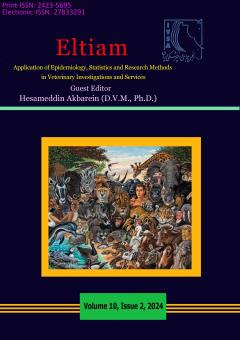As the anatomical condition of the limbs is extremely important for production performance, animal welfare, as well as economic consequences, it is very important to study the types of limbs malformations in infants and provide corrective measures. A congenital malforma
More
As the anatomical condition of the limbs is extremely important for production performance, animal welfare, as well as economic consequences, it is very important to study the types of limbs malformations in infants and provide corrective measures. A congenital malformation of the animal's limbs is more common in calves, lambs, and foals, involving flexor and extensor tendons in the fetlock and pastern joints. Deformities of the wrist and palmar-carpal joint in the forelimbs are the most common congenital deformities in calves. A non-surgical treatment is performed in cases whose limbs can be opened with the hand, and the ventral part of the fingers is in contact with the ground. The use of surgical treatment is mainly reserved for severe cases of deformity and calves with insufficient correction after splints and casts have failed. Generally, calves with flexion deformity have a good prognosis. Angular deformity of the limb refers to the deviation of the limb outward (valgus) or inward (varus). An Dorso-Palmar (Plantar) position is necessary to examine and measure the deformity's anatomical position. Angular deformities associated with abnormal bone growth plates can be corrected by removing the bone matrix or delaying on growth plate using of fixation through the growth plate. Furthermore, there are two other surgical methods for correcting angular deformity: osteotomy using the closing wedge and the step-wise method. Angular deformities related to imbalances in growth plates have a good prognosis. Secondary angular deformity caused by orthopedic injuries in the opposite limb has a poor prognosis.
Manuscript profile


